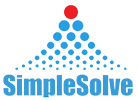7 Signs of a Legacy System - Sign 6 Might Surprise You

The term ‘legacy systems’ often conjures up images of bulky on-premise systems and devices that haven’t been in circulation since the early 2000s. That might not be what your current platform resembles - but does that mean your software is truly up-to-date?
A legacy system needs to be defined by the capabilities it provides your organization, not necessarily by how long you’ve had it for. For example, rather than asking yourself, “When was my current system implemented?” you might want to ask yourself, “Does my current system empower my team to collaborate efficiently in a secure environment?” Answering these questions will alert you to whether you need to kickstart the process of legacy modernization.
For a functional definition, legacy can refer to any piece of software or even an entire system that blocks or reduces an organization’s ability to grow, shift and adapt in the face of changing market dynamics.
So, is it time to make the switch to a new updated system? Here are seven signs your company has outgrown its legacy software.
Also Read: Is Your Tech Stack Holding You Back from a Full Digital Transformation?
You don’t receive regular updates
A software system is essentially a living entity. It needs to constantly update and upgrade itself to keep running smoothly. Even if you purchase the latest software, it’s quite possibly going to be outdated in a year if it hasn’t been updated. Software providers are constantly rolling out updates that improve security, usability, and capabilities of the software to remain on par with advancements in technology.
If your legacy software hasn’t received an update in the recent past, that almost always means that either your software is being phased out or the provider has already discontinued services for it. Can you keep running your system with the current software version that you have? Most likely not. As it gets progressively more outdated, it could lead to security gaps, unsupported integrations, and productivity roadblocks.
You have vulnerabilities in your security infrastructure
Hackers are getting increasingly sophisticated and it can be hard for legacy systems running on outdated technology to keep pace with them. Older systems are protected against hacking techniques prevalent at the time they were created. They are often powerless against newer hacking techniques like SQL injections and hacking of the IoT network.
A security audit to evaluate the strength of your legacy software against the latest hacking techniques needs to be routinely conducted. If these audits expose gaping vulnerabilities in your software, then legacy modernization is critical. Data leaks in insurance can result in severe repercussions, making it critical to invest in a new secure insurance software that can effectively protect your company against cyberattacks.
Your team is not working productively
The modern workday is defined by the goals met and not by the hours clocked in. The goal of any technology platform must be to maximize the efficacy of your entire team. This is done by ensuring they can collaborate easily, make use of self-service options and work out of a single dashboard.
Most legacy systems have a high technological threshold, which means that only certain members - usually in your IT team - end up working out of them. Newer systems are based around the democratization of software and are intuitive and easy to use regardless of an employee’s technological skill level. This way, legacy modernization improves collaboration across the board, increasing visibility, and productivity.

You aren’t able to integrate it with the latest tools
In today's scenario, this could be the defining difference between a legacy system and a modern tech stack. For instance, can your present insurance administration system support integration with IoT?
Your organization probably depends on a gamut of tools to keep it running and many of them are from a third party. If your legacy system does not support cloud integration or allow easy integration with new features available in third-party, single-service modules, this would impede efficiency. This is especially true in the case of IoT, where the seamless functioning of each IoT device depends upon the entire network being connected on a cloud-based platform.
Older systems are built on software that might not be compatible with newer technologies like cloud integration and IoT. Each of your teams could be operating in silos, resulting in communication gaps. Lack of a strong integrated system could also leave you wide open to security threats when data is being shifted from one tool to another.
Your competitors have long moved on to other systems
Your performance compared to your competitors can often be measured against three parameters:
- Quality of customer support,
- Speed of internal operations
- Range of services provided.
All three parameters are directly tied to the system your organization runs on. If your competitors are using the latest insurance software while you are tied down to outdated technology, then you might not be able to match their performance. Data migration to a newer insurance software is critical to reclaiming your competitive advantage.
Also Read: Cybersecurity Threats for Insurance Companies – Are You at Risk?
Your maintenance costs are higher than implementation costs
One of the biggest concerns that companies have about data migration from their legacy system to new software is the high costs that it can entail. However, your legacy system can pile up costs in the long run and can work out to be more expensive than the cost of implementing cost-efficient software. These systems often require frequent maintenance by an in-house IT team. The long downtime during maintenance can also result in revenue loss for your company. Modern software, by comparison, can be updated remotely, require very little maintenance and result in little to no downtime.
It’s a known fact that legacy systems require an immense budget and more man-hours to maintain. For example, the public report from the Government Accountability Office reveals that an annual cost of $337 million is needed to maintain the federal government’s 10 legacy systems
Migration to a new tech stack can be even more cost-effective if the insurance solution you are evaluating does not have DWP-based renewals as part of the plan. This can work out to be very expensive. SimpleSolve offers transparent pricing plans and costs based only on the services provided, so you won’t have unplanned expenses.
Your software isn’t compliant with the latest regulations
Insurance regulation codes are frequently updated and your company needs to evolve along with them to ensure you’re compliant with the latest regulatory laws. A failure to comply can often result in blacklisting, expensive litigation, and negative brand perception.
A legacy software running on outdated technology might not adhere to the latest updates. Newer software platforms are frequently updated to comply with the latest regulatory codes like HIPAA and GDPR.
An ineffective legacy system can be the biggest impediment to growth and innovation. Are you ready to transform your organizational capabilities with the latest in insurtech software? Learn more about SimpleSolve, your comprehensive enterprise insurance software that ensures your company is future-ready.
Topics: Legacy System Modernization








